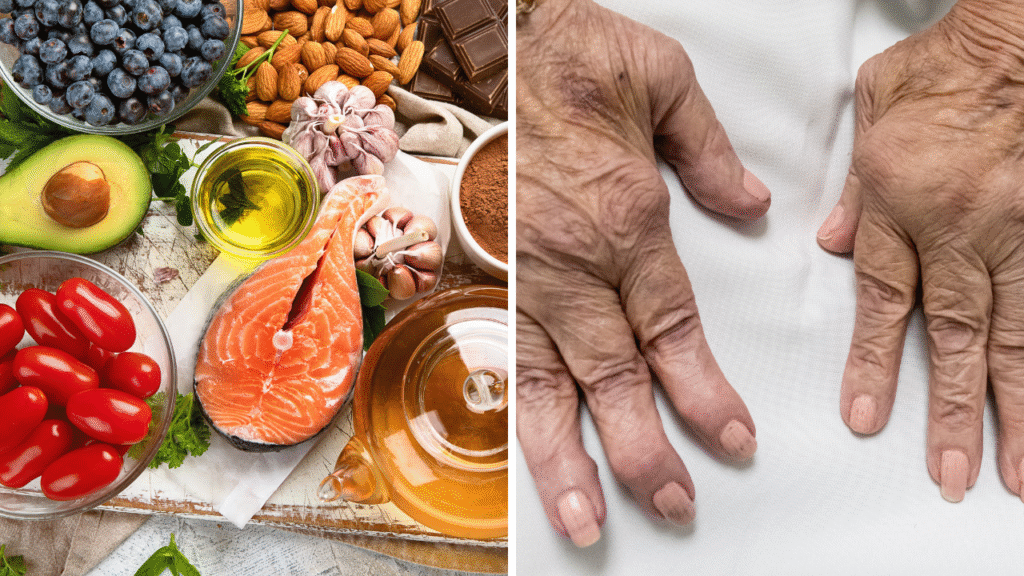

Allergies are hypersensitive immunological reactions in some persons to foreign entities that are usually harmless. These allergies include dust, pollen, medications, certain food groups, pet dander, and others.
The Most Common Allergy Triggers and how to avoid them are Listed Below.
1. Pollen
Pollen is a fine, dust-like substance discharged into the sky by trees, grass, and weeds.
Pollen is one of the most common allergy triggers in the United States. This allergic reaction is typically characterized by a cough, nasal congestion, red and watery eyes, and a runny nose.
Furthermore, certain chemical pollutants inhaled with pollen might aggravate an allergic reaction by destroying the pollen’s cell wall and increasing allergen release. (1)
Prevention
- To avoid an allergic response, follow these guidelines:
- When the pollen count is high, stay indoors, especially if it’s hot and windy outside.
- Keep your windows and doors closed to prevent pollen from entering your home.
- Use an air conditioner with HEPA filters to prevent pollen from entering.
- Wear protective gear such as sunglasses and a mask if you must be outside.
- Because pollen grains might become attached to your clothing and end up in your home, change out of your clothes as soon as you return home.
2. Dander from animals
Animal dander consists of microscopic flakes of dead skin that are shed from the skin or hair of hairy animals like cats, dogs, rodents, and birds. As a result, pets, farm animals, and laboratory animals are vital sources of allergens that can induce sensitization and allergic disorders. (2)
Prevention
- If you are sensitive to animal dander, you should take the following precautions:
- Bathe your pet regularly to remove dander and keep it from infecting your living space.
- Pets should not be allowed in your bedroom or on your furniture.
- To reduce dander, change and wash your bedding regularly.
- Vacuum the floor and furnishings regularly.
3. Mold
Because mold can grow anywhere there is moisture and is often invisible to the human eye, individuals who are allergic to it may have difficulty avoiding it.
Mold allergy is typically under-reported because patients allergic to mold are frequently sensitized to other allergens to which they have previously been exposed and may already have IgE antibodies. (3)
The presence of these antibodies masks mold allergy symptoms.
Prevention
- Mold-allergic individuals should take steps to maintain their homes as mold-free as possible.
- Ventilate and dry out wet areas, including the bathroom, kitchen, and basement. Also, clean them regularly to help eradicate any existing mold spores and prevent new ones from forming.
- While showering, turn on the exhaust fan to remove moisture from the bathroom.
- If a room smells musty and humid, use a dehumidifier and regularly clean its filters and coils.
- Leaky pipes or roof shingles should be repaired as soon as possible.
- The drainage area around the house must be cleaned regularly.
- Clean up any damp firewood or moldy leaves in the backyard.
- If you suspect mold in your home or business, have a professional evaluate and clean the area.
4. Dust mites in the home
Dust mites may survive in nearly any climate or altitude, but thrive in your house’s warm, damp confines, where they feed on dead skin cells regularly. They can become ingrained in the fabric of your home’s surfaces, including bedding, carpeting, upholstery, drapes, and mattresses.
Dust mite allergies affect about 40% of the global population, with nearly 20 million sufferers in the United States alone.
Prevention
- Although it is impossible to eliminate all dust mites from your home or office, you can reduce their presence by taking the following precautions:
- Carpeting, especially in the bedroom, attracts more dust mites.
- Clean the house regularly and thoroughly to remove the mites, preferably with a central vacuum or a vacuum equipped with a HEPA filter.
- Wear an N95 mask over your nose and mouth during house cleaning operations.
- Cleaning can cause dust to fly into the air, which takes at least 2 hours to settle. As a result, clean your bedroom on time.
- Change your bed sheets regularly and wash worn ones in hot water to destroy dust mites.
- Put mite-proof covers on your mattress and pillows.
- Install and maintain a HEPA air cleaner in the bedroom to filter out mites.
5. Food
A food allergy occurs when you experience an allergic reaction to something you ate. It happens not because the food substance is problematic or harmful in and of itself, but because your body misinterprets it to be such.
Food allergies differ from food intolerances in that they are significantly more severe and can even be fatal. Biologics are a safe and effective treatment option for increasing immunological tolerance to dietary antigens.
Prevention
- Follow these tips to avoid developing food allergies:
- Avoiding the food that triggers the allergic reaction is the first step toward preventing food allergies.
- When shopping for or ordering food, always check the ingredients to ensure it does not include anything you are allergic to.
- If you have a known food allergy, keep epinephrine on hand in case of an emergency.
- Insects and their stings
- Insects can contaminate surfaces that induce an allergic reaction on contact or sting and deliver allergens straight into your body.
6. Stings
Swelling, itching, and redness are common symptoms of an insect sting.
Insect stings can cause severe reactions. Anaphylaxis caused by wasp or bee stings is common, and specialized treatment is required to prevent subsequent severe reactions.
Prevention
- To avoid the possibly fatal effects of an insect sting reaction, take the following precautions:
- Advertisements
- Avoid a region entirely or containing many insects. Yellow jackets, for example, feed on discarded, decaying food and waste. Keep your surroundings tidy and avoid such feeding grounds.
- Perfumes attract honeybees; therefore, avoid wearing perfume when going out.
- Wear protective clothing and footwear before stepping outdoors to cover as much exposed skin as possible.
- If you have previously experienced a severe allergic reaction to an insect bite, keep epinephrine on hand to manage anaphylaxis.
7. Cockroaches (insects)
Cockroach feces, saliva, and body parts contain a particular protein that, if inhaled, can cause an allergic reaction.
In metropolitan and inner-city locations, 40%-60% of persons with asthma have IgE antibodies to cockroach allergens. Asthmatics are more likely to be allergic to cockroaches than non-asthmatics.
Prevention
- Avoid an allergic reaction to cockroaches by taking the following precautions:
- Use pest control or hire a professional pest control service.
- Use boric acid, traps, or poison baits, but avoid these dangerous chemicals if small children or pets are present.
- Cockroaches feed on filth and garbage, so be sure to pick up your trash daily.
- It would be best to talk to your doctor about obtaining allergy injections.
8. Latex
Latex is a milky fluid derived from many seed plants, notably rubber trees.
Latex is the most common rubber component and can be found in various everyday products, including rubber gloves, toys, tires, shoe bottoms, condoms, balloons, rubber bands, bandages, and paint.
There is an urgent need to develop or identify safer alternatives to this widespread allergy. Furthermore, a system for identifying and labeling latex-containing products should be in place to prevent individuals with allergies from using them.
Prevention
- To avoid latex allergy, you must first educate yourself on what it is and how to cope with its symptoms, which requires the assistance of an allergist.
- It is best to inform your doctor and dentist about your issue so that they can avoid using rubber products when evaluating or treating you.
- To reduce the risk of exposure, consider safer alternatives to latex products.
9. Perfume
Some scented cosmetics contain synthetic ingredients that can trigger allergic reactions in certain individuals.
These symptoms are typically caused by increased skin sensitivity and irritation resulting from prolonged exposure to the aromatic substance. Such an impact could lead to allergic contact dermatitis (ACD).
Fragrance is among the most widely reported allergens, particularly among individuals with pre-existing inflammatory skin conditions, such as contact dermatitis.
Prevention
- The best you can do is reduce your chance of exposure by avoiding scented goods.
- It might also be helpful if you took extra precautions when trying out new perfumes.
- Examine a little sample to see if it produces a reaction.
10. Medications or drugs
Certain drugs are misidentified as hazardous chemicals by the body when delivered orally, topically, or intravenously.
Drug allergy is a common clinical problem that an allergist should evaluate.
Typically, management options include avoiding the offending medicine and adopting a more acceptable alternative with a different chemical structure.
Prevention
- While there is little you can do to avoid becoming allergic to a medication, you can avoid adverse reactions by avoiding the drug you are sensitive to and others having a similar chemical composition.
- Instead, see your doctor about safer alternatives to the troublesome drug.
11. Smoke (cigarette, grill, and environmental)
An allergic reaction to charcoal or wood smoke typically resolves on its own, but it can be dangerous for asthma patients because it might precipitate a full-fledged attack. Seasonal allergy sufferers should also avoid cigarette smoke, which can cause and exacerbate symptoms.
Prevention
To avoid an allergic reaction to smoking, do the following:
- Avoid smoky situations as much as possible, but if you must, sit against the wind so the smoke blows away from you rather than toward you.
- Secondhand smoke can be dangerous, so keep it away from yourself.
- Wear an anti-pollution mask to protect yourself from airborne allergies.
12. Allergy to metals (nickel)
Nickel is a naturally occurring metal that is frequently combined with other metals to form alloys, which are used to produce a wide range of vital items.
Nickel is a key trigger for allergic contact dermatitis, in which the skin becomes irritated or develops a rash after contact with the metal.
Prevention
- First, see an allergist to determine the source of your symptoms. Once you’ve determined you’re allergic to nickel, you can proceed to the management step. To avoid future allergic reactions, discontinue or reduce the use of nickel-containing goods daily.
Finally
Allergic reactions can be severe when exposed to allergens. As a result, avoiding triggers is the most effective way to prevent allergies.
Additionally, you may use preventive or emergency medications to address the illness. It would also be helpful to discuss allergy immunotherapy with your doctor.






